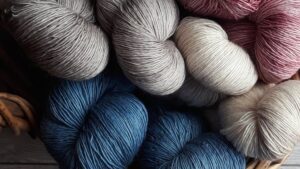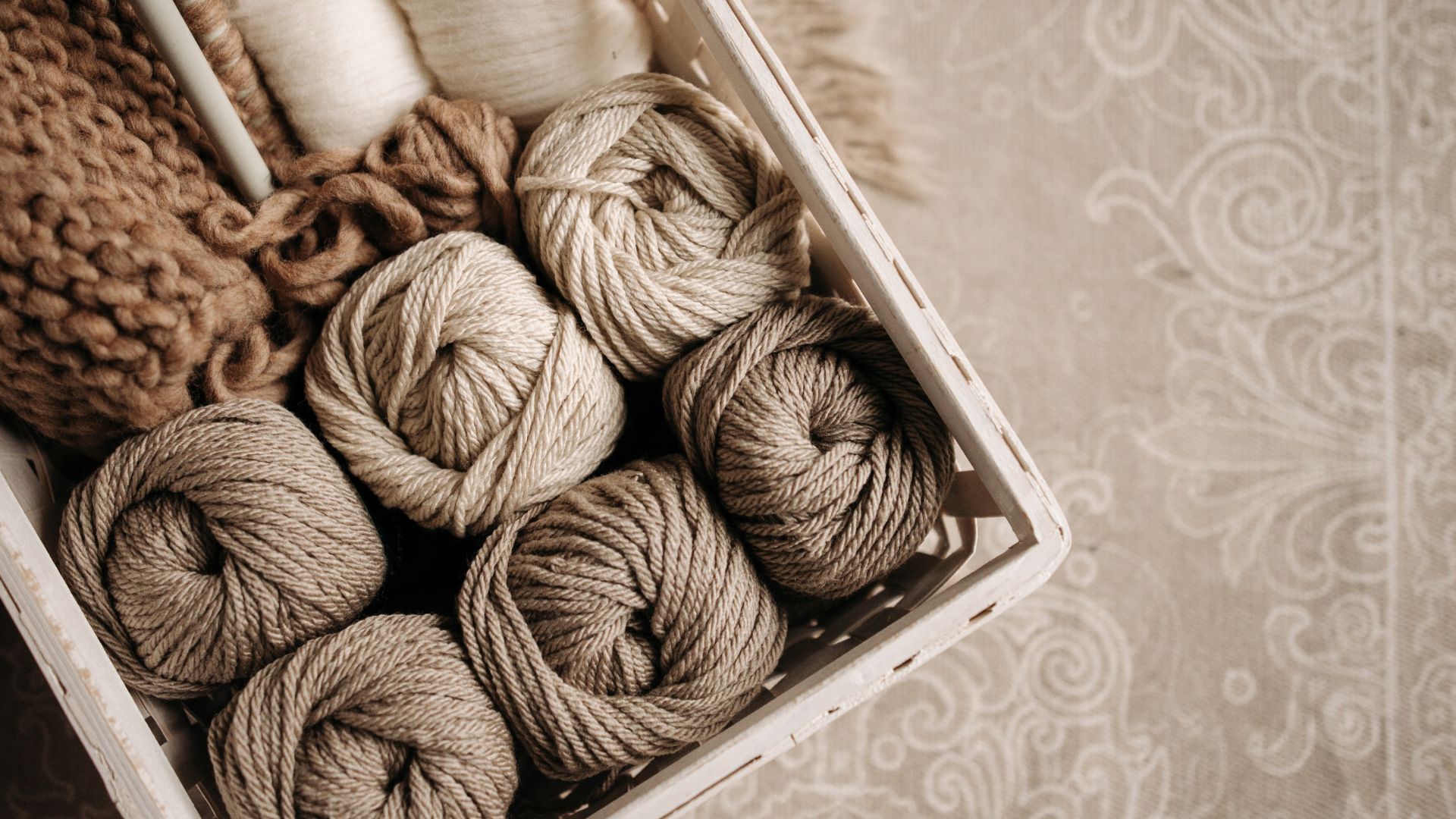Selecting the ideal yarn for your knitting or crocheting project can be as exciting as picking the colors and patterns. The right yarn not only enhances the aesthetic but also influences the texture, drape, and overall feel of your creation. With countless options available, it’s essential to consider a few key factors before diving in.
Fiber Selection
Different fibers offer unique characteristics that affect the final product’s look, feel, and care requirements. Here are some common options:
- Wool: Known for warmth and elasticity, wool is great for sweaters and outerwear.
- Cotton: Ideal for warm-weather garments due to its breathability and easy-care properties.
- Acrylic: Budget-friendly, versatile, and available in various colors; great for beginners.
- Alpaca, Mohair, Silk: Offer luxurious textures and drape, suitable for elegant garments or accessories.
Consider the properties of the fiber in relation to the project’s intended use and care instructions.
Texture and Feel
The texture of the yarn impacts the appearance and feel of your finished piece. Smooth yarns highlight stitch definition, making intricate patterns stand out. On the other hand, textured or novelty yarns can add flair and depth to simpler designs. Run your fingers through the yarn to assess its softness, loft, and how it drapes.

Color and Dye Lots
Color choice can significantly impact the look of your project. Consider how the colors interact with your pattern and the intended recipient’s preferences. Moreover, when buying multiple skeins of the same color, ensure they are from the same dye lot to avoid any variations in shade.
Understanding Yarn Weight
Yarn weight determines the thickness of the yarn and plays a crucial role in your project. Yarns are categorized into different weights, from super fine to super bulky. Each weight suits specific projects:
- Lace, Fingering, and Sock Weight Yarns: Ideal for delicate items like shawls, lacework, and lightweight garments.
- Sport and DK (Double Knitting) Weight Yarns: Versatile for various projects, including sweaters, scarves, and hats.
- Worsted and Aran Weight Yarns: Perfect for blankets, winter wear, and accessories due to their medium weight.
- Bulky and Super Bulky Yarns: Great for quick projects like chunky blankets, scarves, and hats.
Consider the weight recommended in your pattern to achieve the desired outcome.
So,….
Choosing the right yarn involves a delightful blend of practical considerations and personal preferences. By understanding yarn weight, fiber types, texture, and color variations, you’ll confidently pick the perfect yarn for your next creative endeavor. Remember, experimentation is part of the fun, so don’t be afraid to explore and discover new possibilities with different yarns!
External Resources:
- Understanding Yarn Weights – Craft Yarn Council
- Guide to Different Types of Yarn Fibers – Interweave
- Choosing the Right Colors for Your Knitting Project – AllFreeKnitting
Exploring Yarn Choices Further
Making the best yarn selection involves delving deeper into certain considerations and understanding the nuances that can truly elevate your project.
Specialty Yarns and Blends
Apart from the conventional yarn types, there are specialty yarns and blends worth exploring:
- Self-Striping Yarn: Creates stripes automatically as you work, adding visual interest without changing colors manually.
- Variegated Yarn: Features multiple colors in a single skein, producing a more intricate look with less effort.
- Blended Yarns: Combining different fibers can offer the benefits of each, like the warmth of wool with the softness of alpaca.
These specialty yarns often provide unique patterns or textures, adding excitement and creativity to your projects.
Consideration for Allergies and Sensitivities
Some individuals may have sensitivities or allergies to certain fibers, such as wool. In such cases, opt for hypoallergenic yarns like bamboo or cotton, ensuring your creation can be enjoyed by everyone.
Gauge and Tension
Understanding gauge and tension is crucial. Gauge refers to the number of stitches and rows per inch in a knitted or crocheted swatch. Different yarns and hook/needle sizes can affect gauge, which in turn impacts the size and fit of your project. Always check the gauge recommended in your pattern to ensure the finished piece matches the intended size.
Sustainability and Ethical Considerations
As awareness about sustainability grows, consider opting for yarns that prioritize ethical sourcing and sustainable practices. Organic cotton, recycled fibers, and yarns from companies committed to ethical production are becoming more readily available and offer a conscientious choice for your projects.
Conclusion
Selecting yarn is an exciting part of the creative process, where your project’s vision merges with practical considerations. Whether you’re aiming for warmth, texture, vibrant colors, or sustainability, exploring the vast array of yarn options allows you to infuse your creations with personality and style.
Remember, each project is an opportunity to learn and experiment with different yarns, colors, and textures, allowing your creativity to flourish!
External Resources:
- Understanding Specialty Yarns – Lion Brand Yarns
- Yarn Allergies and Sensitivities – The Spruce Crafts
- Sustainable Yarns and Ethical Practices – Vogue Knitting
Comparison tabular
| Yarn Type | Weight | Fiber | Texture | Color Variety | Special Features |
|---|---|---|---|---|---|
| Wool | Varies (Lace to Bulky) | Wool | Smooth to Coarse | Solid Colors, Heathered | Warmth, Elasticity |
| Cotton | Varies (Lace to Aran) | Cotton | Smooth | Solid Colors, Variegated | Breathability, Easy Care |
| Acrylic | Varies (Lace to Bulky) | Synthetic | Smooth to Textured | Solid Colors, Multi-Colored | Budget-Friendly, Color Variety |
| Alpaca | Varies (Lace to Bulky) | Alpaca | Soft, Silky | Solid Colors, Heathered | Luxurious, Softness, Warmth |
| Silk | Varies (Lace to Bulky) | Silk | Smooth, Lustrous | Solid Colors, Variegated | Elegance, Sheen, Drape |
| Mohair | Varies (Lace to Bulky) | Mohair | Fuzzy, Fluffy | Solid Colors, Variegated | Fluffiness, Halo Effect |
| Bamboo | Varies (Lace to Aran) | Bamboo | Smooth, Soft | Solid Colors, Variegated | Eco-Friendly, Silky Texture |
| Nylon | Varies (Lace to Bulky) | Synthetic | Smooth, Durable | Solid Colors | Strength, Durability |
| Blends (e.g., Wool-Blend, Cotton-Blend) | Varies (Depends on Blend) | Combination of Fibers | Varied (Smooth to Textured) | Varied | Enhanced Properties, Versatility |
| Specialty Yarns | Varies (Depends on Type) | Various (Self-Striping, Variegated, etc.) | Diverse (Smooth to Textured) | Diverse | Unique Patterns, Effects |
This table offers a quick reference for yarn weight, fiber types, texture, color variety, and special features, aiding in the decision-making process when selecting yarn for your projects.
Remember, while this table provides a general overview, individual yarn brands and variations within each type may have unique characteristics. It’s always beneficial to touch and feel the yarn in person or refer to detailed descriptions before making a final choice for your project
Wrapping up
Selecting the perfect yarn for your project is an adventure that blends creativity with practicality. Consider the project’s requirements like weight, fiber, texture, and color while exploring the vast array of options available. Don’t hesitate to experiment with different yarns; each choice adds its own unique touch to your creation.
Remember, the joy of crafting lies not only in the final product but also in the journey of choosing the yarn, exploring its characteristics, and infusing your project with your personal style. Embrace the process, enjoy the tactile experience, and let your creativity soar with every stitch.

For over a decade, I’ve been Mike, an artist, crafter, and designer deeply immersed in the Croc world. I thrive on crafting unique, size-inclusive patterns, fostering creativity, and sharing them on ktforum.com. My designs aim to ignite your creative spark and delight you, ensuring clarity and ease of use through rigorous testing. Join me in expressing your creative flair and showcasing your craft with joy.
Related Posts
- Choosing the Perfect Yarn for Amigurumi: A Complete Guide
Creating adorable amigurumi creatures can be a joyous and creative journey. One of the most…
- What to Do If You Run Out of Yarn in the Middle of a Project
Running out of yarn in the middle of a project can be a crafter's nightmare.…
- Choosing the Perfect Fabric for Your Quilts
Quilting is an art form that brings together creativity, skill, and a touch of warmth.…
- Tips for Working with Tricky Yarns
Yarn crafts are a joy, but not all yarns are created equal. Some can be…

